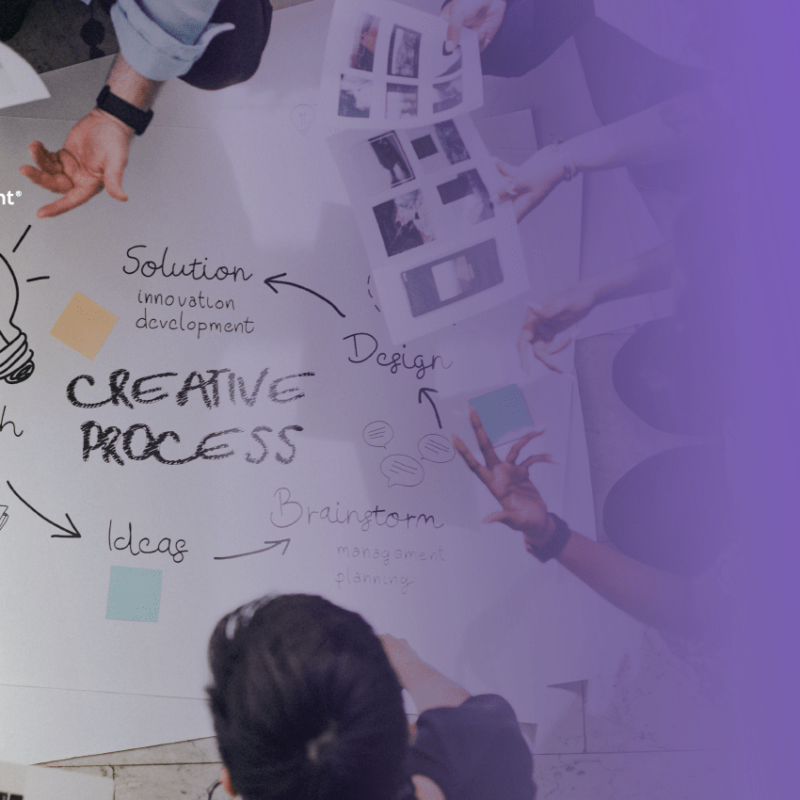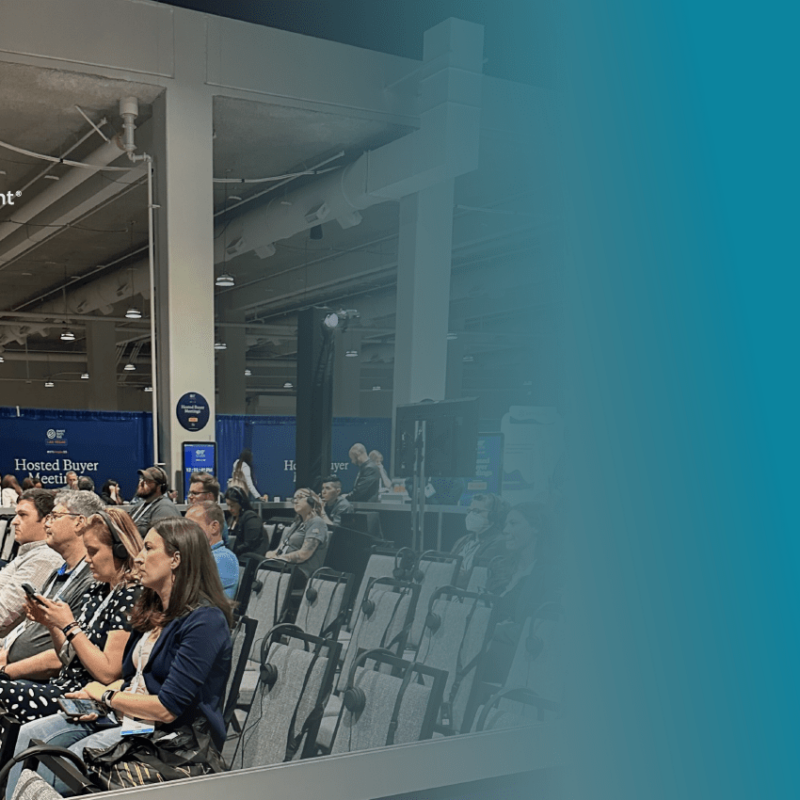Feedback Collection Strategies for Hybrid Events in 2023
In the dynamic realm of hybrid events, real-time feedback collection takes center stage, transforming attendees from passive observers to active contributors. These innovative strategies allow organizers to tap into the collective wisdom of the crowd, creating an immersive and engaging event experience. Let’s see some of the best strategies to collect feedback in real-time:
- Live Polling
Utilizing live polling tools is a great strategy to engage attendees in hybrid events and gather instant feedback. This interactive feature not only encourages active involvement from those physically present but also enables individuals behind screens to actively contribute in real-time. By allowing attendees to express their opinions, vote on crucial topics, and provide immediate feedback, live polling cultivates an engaging environment. Event organizers can leverage this real-time interaction to accurately gauge audience sentiment, gather valuable insights, and swiftly adapt the event to meet the evolving needs of attendees, irrespective of their physical location.
- Interactive Q&A Sessions
You can incorporate interactive Q&A sessions to address attendee queries and collect real-time input. Attendees can unleash their curiosity and submit questions through chat features or dedicated Q&A platforms. Organizers, armed with a wealth of knowledge and expertise, can respond in real-time, transforming the event into a dynamic dialogue. Attendees feel heard, valued, and actively involved in shaping the event’s narrative. Interactive Q&A sessions create a sense of co-creation, where everyone can participate and the event becomes a collaborative journey with attendees as co-pilots.
- In-App Feedback Features
In today’s smartphone-centric world, event apps have become indispensable companions for attendees. They offer seamless access to event information and elevate the overall experience. Whether it’s rating sessions, sharing impressions, or providing suggestions for improvement, attendees can effortlessly shape their event experience on the go. By serving as digital feedback hubs, event apps facilitate a two-way communication process. This revolutionizes the level of attendee participation and provides organizers with a treasure trove of valuable insights to enhance future events. Whether you need to create an app that is customized or utilize one of the existing event apps, the impact on attendee engagement, streamlined communication, and unlocking valuable data for organizers to improve future events is truly profound.
- Social Media Monitoring
Social media becomes the virtual hub where attendees congregate to discuss, share, and amplify their event experiences. By monitoring event hashtags, mentions, and conversations, organizers gain real-time insights into attendee sentiment, trending topics, and emerging discussions. Social media monitoring check allows organizers to identify potential issues, gauge overall attendee satisfaction, and spot exciting moments that warrant amplification. It’s like having a finger on the event’s social pulse, enabling organizers to make informed decisions and ensure a memorable and impactful event. In addition, having insights into the optimal timing for social media posts allows organizers to capitalize on the highest levels of audience activity, thereby increasing the reach and engagement of event-related content.
Strategies For Post-Event Feedback Collection
Source: Vecteezy.com
After the curtain falls on the hybrid event, the real work begins: collecting post-event feedback to gain valuable insights and drive improvements for future events. By implementing effective strategies, organizers can unlock the full potential of post-event feedback collection.
- Post-event surveys and questionnaires
Designing comprehensive surveys is a crucial step in gathering feedback on various aspects of the event, considering both in-person and remote attendees. It’s important to create well-structured surveys that cover key areas specific to hybrid events. These may include evaluating the quality of the content delivered in both the physical and virtual settings, assessing the effectiveness of speakers in engaging both audiences, gauging the satisfaction with networking opportunities in both realms, understanding attendee preferences for hybrid pricing models, and capturing overall satisfaction with the hybrid event experience.
By tailoring surveys to address the unique dynamics of hybrid events, organizers can gather valuable insights and make informed decisions to enhance future hybrid event offerings. By including a mix of quantitative and qualitative questions, you can capture both measurable data and nuanced insights that inform pricing decisions and help optimize dynamic pricing strategies for future events.
- Interviews and focus groups
While surveys provide a broad overview of attendee feedback, conducting one-on-one interviews or focus groups takes feedback collection to a deeper level. This approach enables organizers to engage in meaningful conversations with select attendees and gather qualitative insights. By selecting a diverse group of participants, organizers can gather a range of perspectives and uncover valuable feedback that may not be captured through surveys alone.
During interviews or focus groups, it is crucial to create a comfortable and inclusive environment where attendees feel heard and valued. Prepare a list of thoughtful, open-ended questions that encourage attendees to share their experiences, suggestions, and areas for improvement. By fostering an atmosphere of trust and collaboration, organizers can gain in-depth insights and build stronger relationships with attendees.
- Email follow-ups and feedback reminders
Engaging attendees post-event is essential to encourage their participation in providing feedback. Personalized follow-up emails play a vital role in expressing gratitude for attendees’ participation and emphasizing the importance of their feedback. These emails should go beyond generic templates and convey genuine appreciation for their contribution to the event’s success.
Provide clear instructions on how to access the post-event survey, highlighting its ease of completion. Include direct links and assure attendees that their feedback will be carefully considered. Sending timely reminders can significantly impact participation rates, ensuring a robust feedback collection. However, it is important to strike a balance and maintain a friendly and encouraging tone to avoid overwhelming attendees.
Neal Taparia from Solitaired adds, “incorporating incentives such as a raffle entry for feedback submission can be a compelling way to encourage attendee participation. Additionally, keeping the survey concise and focused on essential questions while reassuring respondents that their time investment will be minimal will greatly boost survey engagement and yield valuable insights.”
Feedback Data Analysis
Source: unsplash.com
To unlock the true potential of feedback collected from hybrid events, organizers must embark on a journey of data analysis and extract actionable insights. This crucial step allows them to make informed decisions, prioritize improvements, and enhance future event experiences. Here are the key stages involved in analyzing feedback data and deriving valuable insights:
- Consolidating and organizing feedback data
Once feedback is collected from various sources, it’s important to consolidate and organize the data in a structured manner. This involves categorizing feedback based on different aspects of the event, such as content, speakers, logistics, and overall experience. By organizing the data, organizers can easily access and review the feedback, ensuring a comprehensive analysis.
- Analyzing quantitative feedback
Quantitative feedback, such as ratings, rankings, and statistical data, provides valuable insights into attendee perceptions and preferences. By analyzing this data, organizers can identify trends, evaluate the effectiveness of specific elements, and quantify the overall satisfaction levels. This analysis helps prioritize areas for improvement and guides decision-making processes for future events.
- Extracting qualitative insights
While quantitative feedback offers numerical data, qualitative insights derived from open-ended comments and suggestions provide a deeper understanding of attendee experiences. These insights capture the nuances, emotions, and specific suggestions shared by attendees. Organizers should carefully review and extract key themes, recurring patterns, and notable anecdotes from qualitative feedback. This qualitative analysis provides rich context and helps uncover valuable insights that may not be apparent from quantitative data alone.
- Identifying trends, patterns, and areas for improvement
By combining quantitative and qualitative analyses, organizers can identify emerging trends, patterns, and areas that require improvement. They can uncover common challenges faced by attendees, highlight successful elements of the event, and identify opportunities for growth. By spotting patterns and trends, organizers can make strategic decisions to enhance future event experiences.
- Prioritizing actionable insights for future hybrid events
Not all feedback is created equal, and it’s essential to prioritize actionable insights that have the most significant impact on future events. Organizers should focus on feedback that highlights clear areas for improvement, aligns with event objectives, and has the potential to enhance the attendee experience. By prioritizing actionable insights, organizers can allocate resources effectively, implement necessary changes, and ensure continual improvement in their hybrid event strategies.
Communication and Implementation of Changes
To maximize the impact of feedback and drive continuous improvement in hybrid events, take the following action steps:
- Summarize Feedback for Stakeholders: Share a concise summary of key insights and actionable recommendations with stakeholders, fostering transparency and collaboration.
- Communicate Implemented Actions: Clearly communicate the specific steps taken based on feedback to address attendee concerns and enhance the event experience. Demonstrate responsiveness and reinforce the value placed on attendee feedback.
- Highlight Improvements: Integrate feedback-driven improvements into future event communications, emphasizing changes made to enhance the attendee experience and generating excitement among potential attendees.
- Solicit Ongoing Feedback: Actively seek ongoing feedback and suggestions from attendees through dedicated channels like online forms or interactive sessions. Encourage attendees to participate in shaping future events and consider implementing incentives to motivate their engagement.
Conclusion
Incorporating feedback collection strategies is essential for enhancing the attendee experience in hybrid events. Real-time feedback collection allows for immediate adjustments, while post-event feedback provides valuable insights for future improvements. Analyzing feedback data helps identify trends and prioritize actionable insights. Effective communication of actions taken, highlighting improvements, and soliciting ongoing feedback drive collaboration and continuous improvement. By valuing and acting upon attendee feedback, organizers can ensure the success and growth of future hybrid events. Let’s embrace feedback, shape exceptional event experiences, and create lasting impacts together.
The author Zuzana Hudecova is a marketing specialist for CloudTalk, helping to create compelling messaging in support of the next generation of cloud communication and call center softwares.











